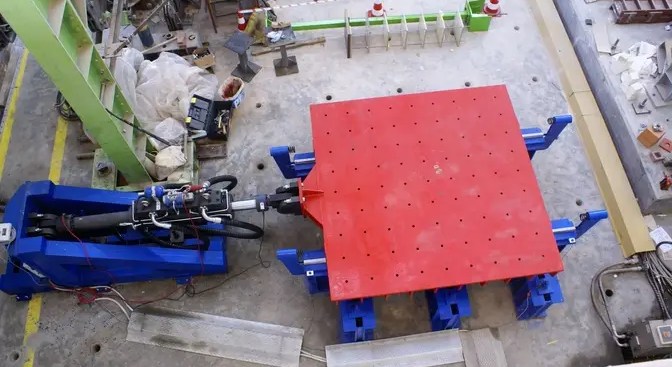1. Formation Requirements
- File Articles of Incorporation:
- Form: Articles of Incorporation (Form ARTS-GS)
- Deadline: Upon creation
- Fee: $100
- Website: California Secretary of State
- Appoint a Registered Agent:
- Deadline: Upon creation
- Initial Statement of Information:
- Form: Statement of Information (Form SI-200)
- Deadline: Within 90 days of formation
- Fee: $25
- Website: California Secretary of State
2. Annual Requirements
- Annual Statement of Information:
- Form: Statement of Information (Form SI-200)
- Deadline: Annually by the end of the anniversary month of incorporation
- Fee: $25
- Website: California Secretary of State
- Franchise Tax:
- Form: California Form 100S
- Deadline: March 15th (for calendar year filers)
- Minimum Tax: $800 annually
- Website: California Franchise Tax Board
- California S-Corp Tax Return:
- Form: Form 100S (California S Corporation Franchise or Income Tax Return)
- Deadline: March 15th (for calendar year filers)
- Fee: Based on net income
- Website: California Franchise Tax Board
3. Quarterly and Bi-Annual Requirements
- Estimated Tax Payments:
- Form: Form 100-ES
- Deadline: April 15th, June 15th, September 15th, December 15th
- Fee: Based on estimated tax
- Website: California Franchise Tax Board
4. Federal Requirements
- S Corporation Election:
- Form: IRS Form 2553
- Deadline: No more than 2 months and 15 days after the beginning of the tax year the election is to take effect
- Website: IRS Form 2553
- Federal Tax Return:
- Form: IRS Form 1120S
- Deadline: March 15th (for calendar year filers)
- Fee: Based on net income
- Website: IRS Form 1120S
- Shareholder K-1s:
- Form: IRS Schedule K-1 (Form 1120S)
- Deadline: March 15th (to shareholders)
- Website: IRS Schedule K-1 (Form 1120S)
5. Employment Requirements
- California Employment Development Department (EDD):
- Form: DE 1 (Registration Form for Commercial Employers)
- Deadline: Within 15 days of employing first worker
- Website: California EDD
- Ongoing Reporting: DE 9 and DE 9C quarterly
- Website: California EDD Quarterly Reporting
6. Sales and Use Tax Requirements
- California Sales Tax Permit:
- Form: CDTFA-400-SP
- Deadline: Before commencing business
- Website: California Department of Tax and Fee Administration
- California Sales Tax Filings:
- Website: CDTFA Online Services
7. Government Contracting Requirements
- SAM Registration:
- Form: System for Award Management (SAM)
- Renewal: Annually
- Deadline: Based on the initial registration date
- Fee: Free
- Website: SAM Registration
- California e-Procure Registration:
- Form: Cal eProcure
- Renewal: Annually
- Deadline: Based on the initial registration date
- Fee: Free
- Website: California e-Procure
Comprehensive Schedule
| Requirement | Form | Frequency | Deadline | Fee | Website |
|---|---|---|---|---|---|
| Articles of Incorporation | ARTS-GS | Once | Upon creation | $100 | Link |
| Initial Statement of Information | SI-200 | Once | Within 90 days of formation | $25 | Link |
| Annual Statement of Information | SI-200 | Annually | End of anniversary month | $25 | Link |
| Franchise Tax | Form 100S | Annually | March 15th | Minimum $800 | Link |
| California S-Corp Tax Return | Form 100S | Annually | March 15th | Based on net income | Link |
| Estimated Tax Payments | Form 100-ES | Quarterly | April 15th, June 15th, September 15th, December 15th | Based on estimated tax | Link |
| S Corporation Election | IRS Form 2553 | Once | No more than 2 months and 15 days after the beginning of the tax year | – | Link |
| Federal Tax Return | IRS Form 1120S | Annually | March 15th | Based on net income | Link |
| Shareholder K-1s | IRS Schedule K-1 (1120S) | Annually | March 15th | – | Link |
| California EDD Registration | DE 1 | Once | Within 15 days of employing first worker | – | Link |
| California EDD Quarterly Reports | DE 9 and DE 9C | Quarterly | Last day of the month following the end of the quarter | – | Link |
| California Sales Tax Permit | CDTFA-400-SP | Once | Before commencing business | – | Link |
| California Sales Tax Filings | Online (CDTFA) | Quarterly or Annually | Based on revenue and CDTFA schedule | – | Link |
| SAM Registration | SAM | Annually | Based on initial registration date | Free | Link |
| California e-Procure Registration | Cal eProcure | Annually | Based on initial registration date | Free | Link |
Notes:
- Ensure to check for any changes in forms or deadlines as they can be updated by the respective authorities.
- Additional local permits and licenses might be required based on the specific business activities and location.
This information is brought to you by QuakeLogic. For sales contact us at sales@quakelogic.net











